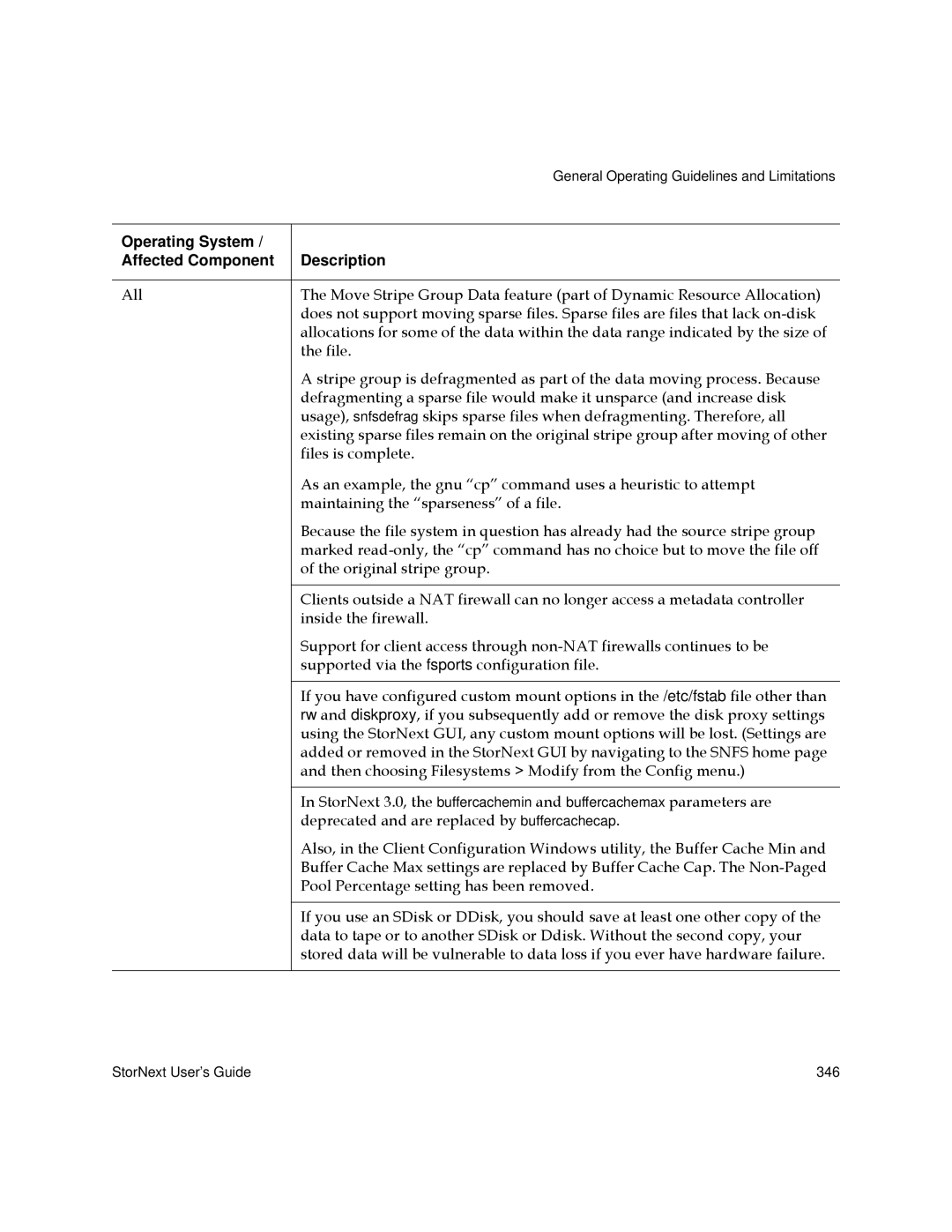| General Operating Guidelines and Limitations |
|
|
Operating System / |
|
Affected Component | Description |
|
|
All | The Move Stripe Group Data feature (part of Dynamic Resource Allocation) |
| does not support moving sparse files. Sparse files are files that lack |
| allocations for some of the data within the data range indicated by the size of |
| the file. |
| A stripe group is defragmented as part of the data moving process. Because |
| defragmenting a sparse file would make it unsparce (and increase disk |
| usage), snfsdefrag skips sparse files when defragmenting. Therefore, all |
| existing sparse files remain on the original stripe group after moving of other |
| files is complete. |
| As an example, the gnu “cp” command uses a heuristic to attempt |
| maintaining the “sparseness” of a file. |
| Because the file system in question has already had the source stripe group |
| marked |
| of the original stripe group. |
|
|
| Clients outside a NAT firewall can no longer access a metadata controller |
| inside the firewall. |
| Support for client access through |
| supported via the fsports configuration file. |
|
|
| If you have configured custom mount options in the /etc/fstab file other than |
| rw and diskproxy, if you subsequently add or remove the disk proxy settings |
| using the StorNext GUI, any custom mount options will be lost. (Settings are |
| added or removed in the StorNext GUI by navigating to the SNFS home page |
| and then choosing Filesystems > Modify from the Config menu.) |
|
|
| In StorNext 3.0, the buffercachemin and buffercachemax parameters are |
| deprecated and are replaced by buffercachecap. |
| Also, in the Client Configuration Windows utility, the Buffer Cache Min and |
| Buffer Cache Max settings are replaced by Buffer Cache Cap. The |
| Pool Percentage setting has been removed. |
|
|
| If you use an SDisk or DDisk, you should save at least one other copy of the |
| data to tape or to another SDisk or Ddisk. Without the second copy, your |
| stored data will be vulnerable to data loss if you ever have hardware failure. |
|
|
StorNext User’s Guide | 346 |
